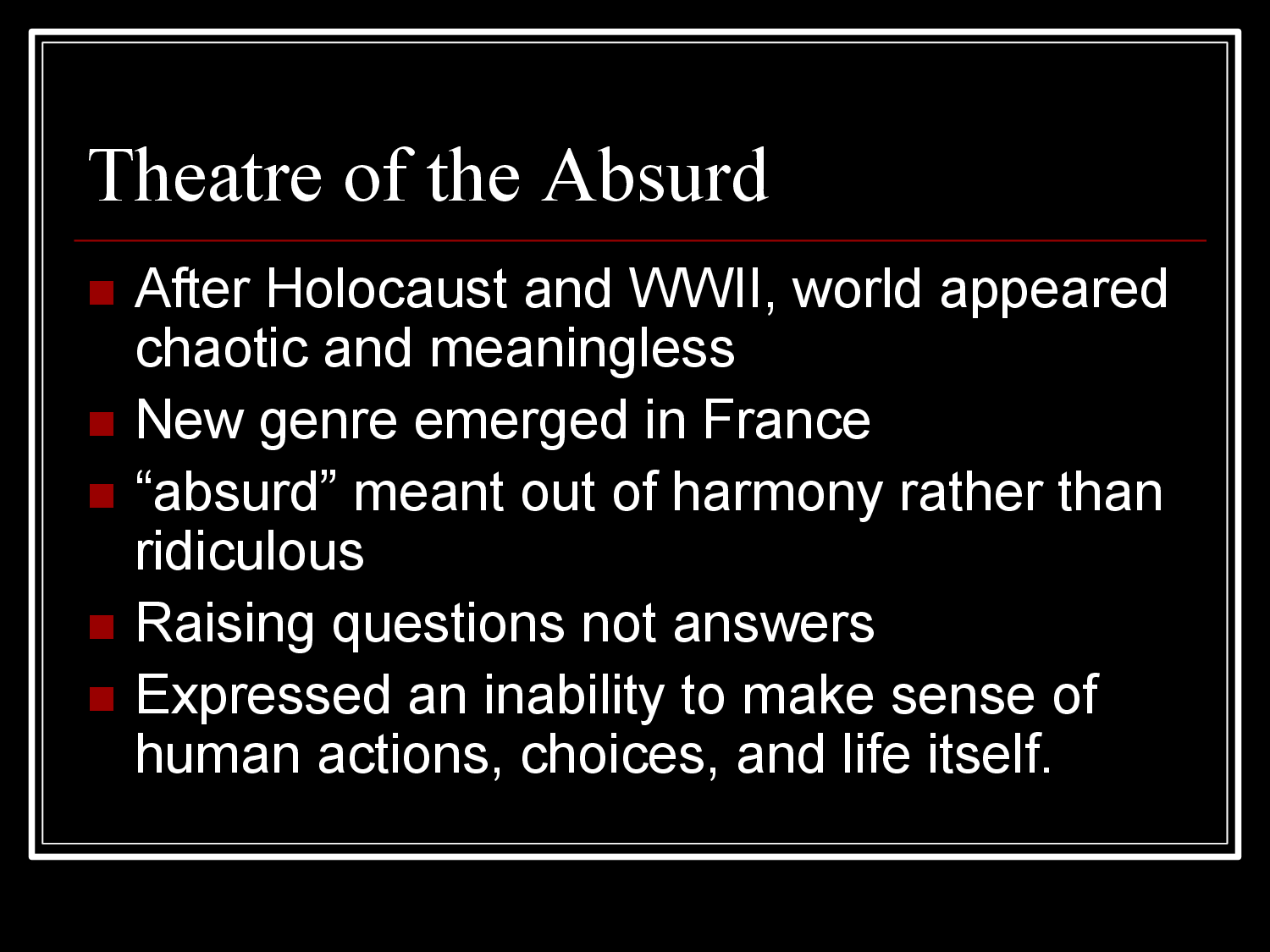Theatre of Absurd

The term “Absurd” in its modern sense was first used by Esslin and since then it was attached to a certain outlook on life and viewpoint in literature. Absurd drama has deep roots; it can be related to the mimes of ancient times as well as to the popular comedies of Italy. It connects with nonsense writing like that of Lewis Carrol as well as with the modern movement known as the Theatre of Cruelty. “Waiting for Godot” is one of the typical examples of it.
The theme of the play shows volcanic upheaval in the political and social departments of that time.
The Theater of Absurd has been a catch-phrase, much used and much abused. The Theatre of Absurd is a Post-war phenomenon. Genet’s “The Maid” had its first performance at the Athenee in Paris in 1947; Lonesco’s “Bald Primodonna” and Adamov’s earliest plays were first produced in 1950 and Beckett’s “Waiting for Godot” in 1952. It will be noticed that all these first performances took place in Paris. And Paris certainly is the fountainhead of the Theatre of the Absurd. Yet it is equally strange and significant the playwrights themselves are largely exiles from other countries gathered in Paris.
BACKGROUND – PURPOSE BEHIND ABSURD PLAYS
The waning of religious faith that had started with the Enlightenment and led Nietzsche to speak of the “Death of God” by the eighteen-eighties; the break down of the liberal faith in inevitable social progress in the wake of the world war; the prediction by Marx after Stalin had turned the Soviet Union into a totalitarian tyranny; the relapse into barbarism, mass murder and genocide in the curse of Hitler’s brief rule over Europe during the Second World War and in the after math of that war. The spread of spiritual emptiness in the outwardly prosperous and affluent societies of Western Europe and the United States. No doubt that many of the sensitive and intellectual minds of the mid twentieth century had lost the meaning of life. The firmest foundations for hopes and optimism collapsed. Suddenly man himself faced with a universe that is frightening and illogical – in a word ‘absurd’. All assurance of hope, all explanations of ultimate meaning have suddenly been unmasked as nonsensical illusions, empty chatter, whistling in the dark. The whole world presents an obscure babble of voices in an un-understandable language. Everything seems to turn in nightmare and horror.
REALISM + CONCLUSION
The realism of absurd plays is a psychological and inner-realism. They explore the human subconscious in depth rather than trying to describe the outward appearances of human existence. Such plays cannot be called deeply pessimistic but an expression of utter despair. The Theatre of Absurd attacks the comfortable certainties of religious or political orthodox. It aims to shock its audience out of complacency, to bring it face to face with the hard facts of human situation as writer sees. It is challenge to accept the human condition as it is, in all its mystery and absurdity, and to bear it with dignity, responsibly and precisely because there are no easy solutions to the mystery of existence. The shedding of easy solutions of comforting illusions may be painful but it leaves behind it a sense of freedom and relief. In the last resort, Theatre of Absurd does not provoke tears of despair but the laughter of liberation.

